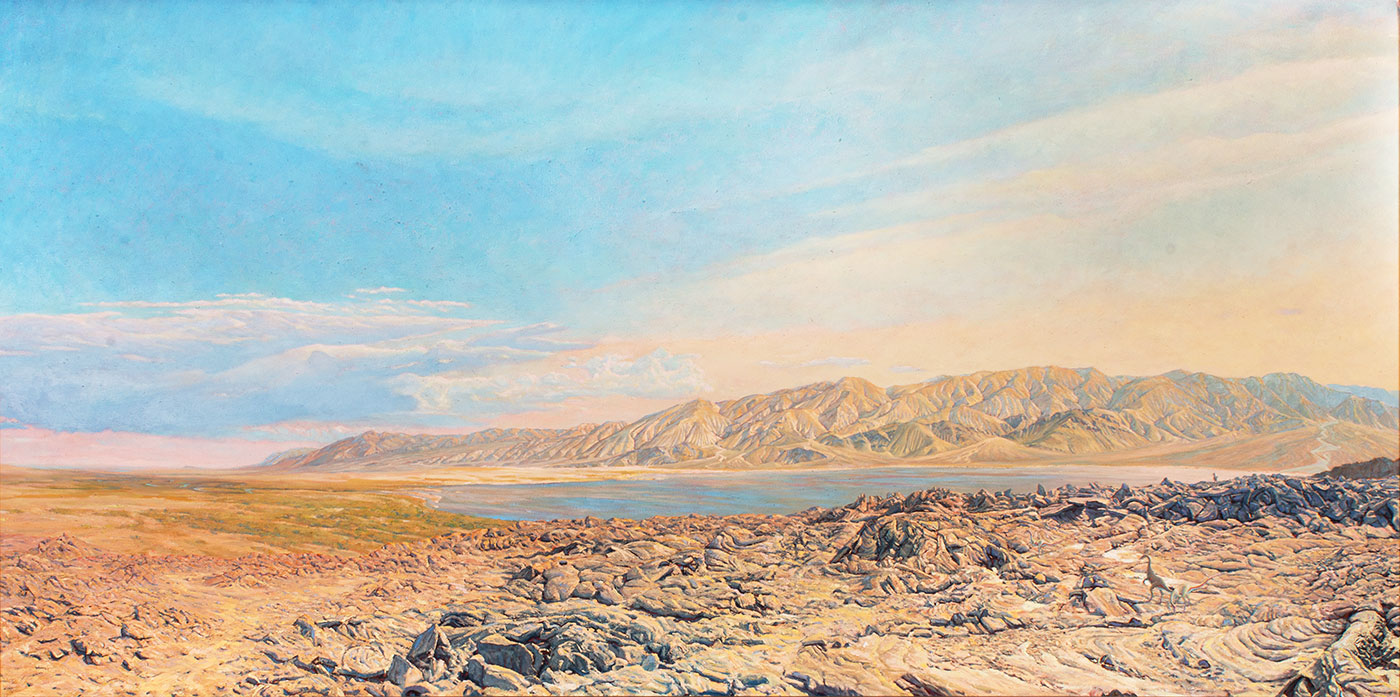
"The Eastern Border Fault Valley During the Early Jurassic", 1987, 48” x 96”, oil on canvas; Image courtesy of Beneski Museum of Natural History at Amherst College.

"The Eastern Border Fault Valley During the Early Jurassic", 1987, 48” x 96”, oil on canvas; Image courtesy of Beneski Museum of Natural History at Amherst College.
This Early Jurassic landscape at the Beneski Museum of Natural History is seen from the lava flows that eventually would form Holyoke Basalt. We look southeast across the basin toward the active fault escarpment created during the break-up of the supercontinent Pangaea. The basalt flow has dammed the basin drainage and a shallow lake has developed upstream.
The climate was generally semi-arid but with cyclical trends alternating between warm, dry periods and cooler, wetter phases. This is a dry phase, with low lake levels, scorching midday heat, but the promise of some late day rain over the highlands beyond the fault. At the lower right, almost imperceptible in the landscape, we see a few Coelophyses on the weathering lava flow. Why are they here, far from the lake margin? Are they young bachelors searching for new habitat? Are they migrating to a roost or breeding site far from other predators or scavengers? Are they en route to another lake or promising hunting ground behind us?